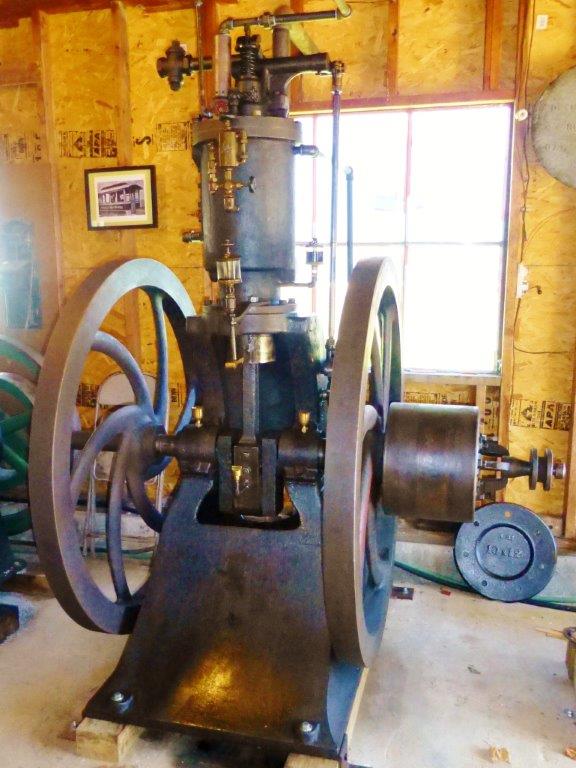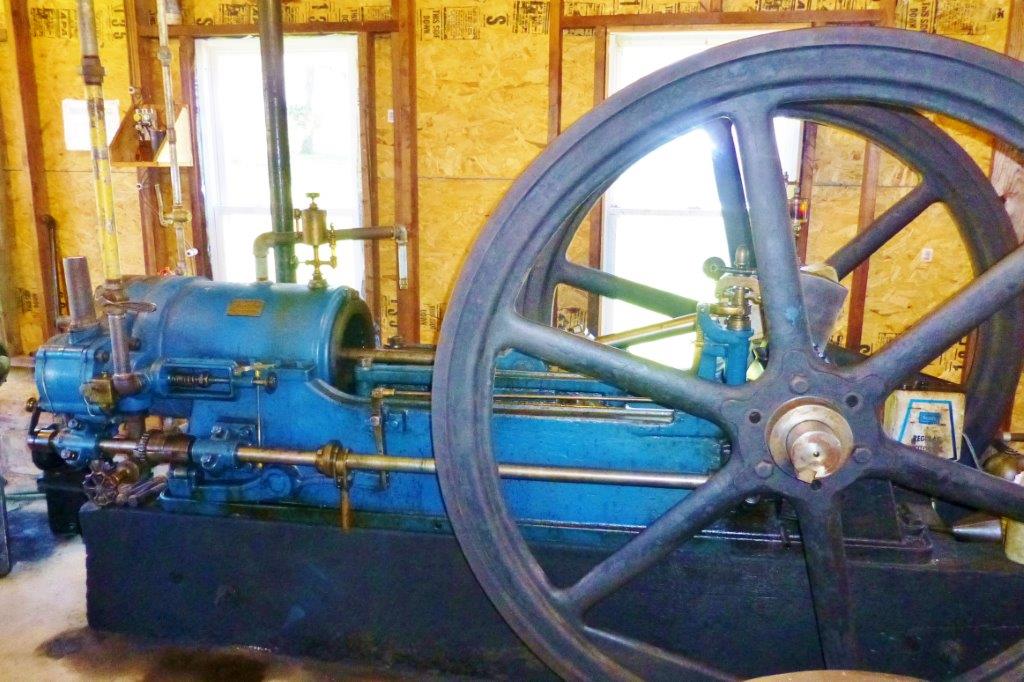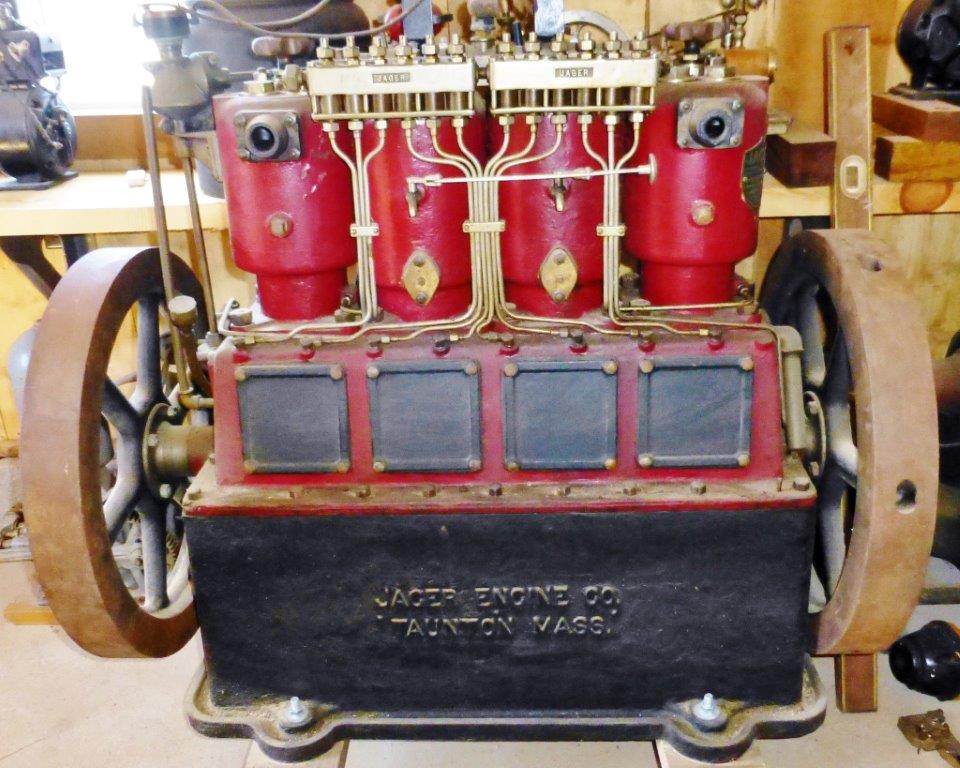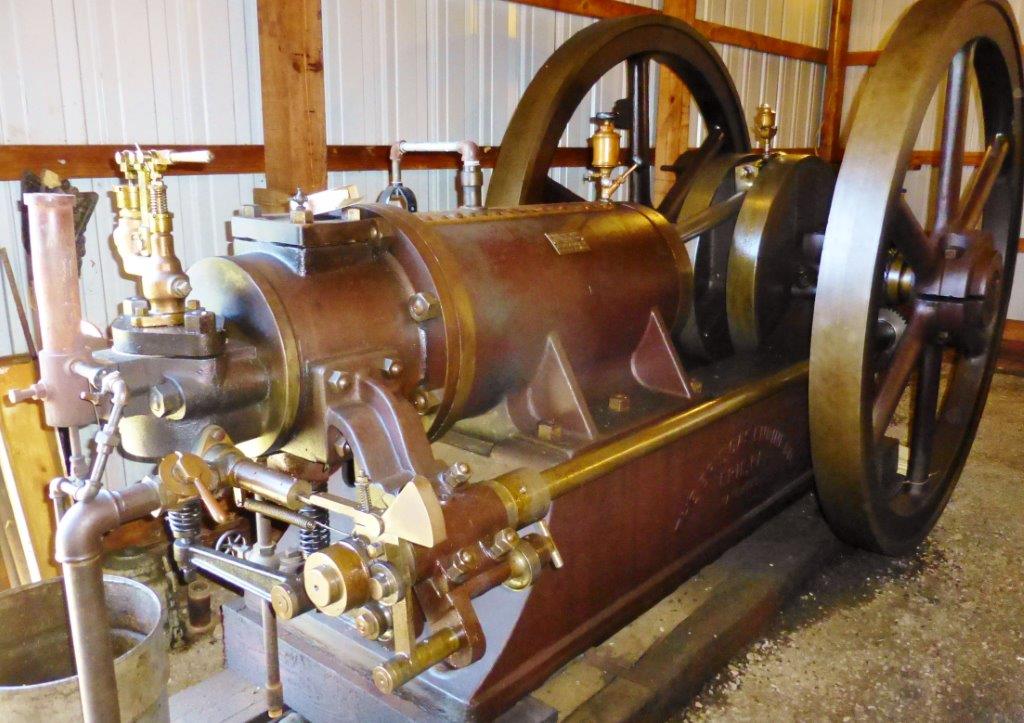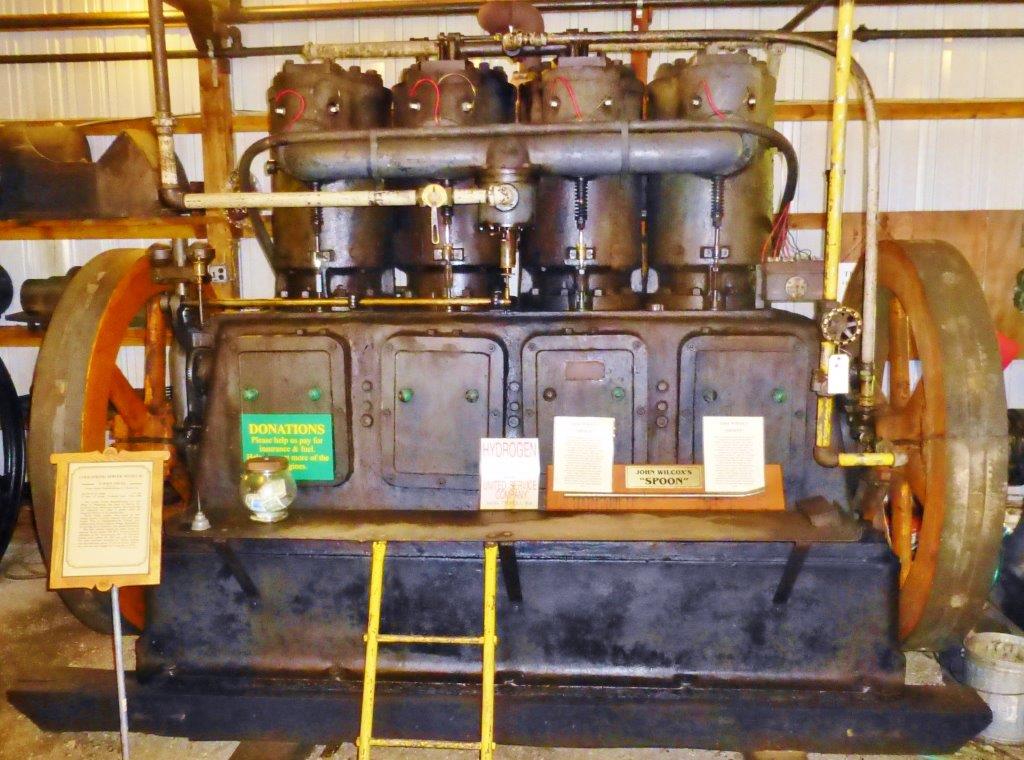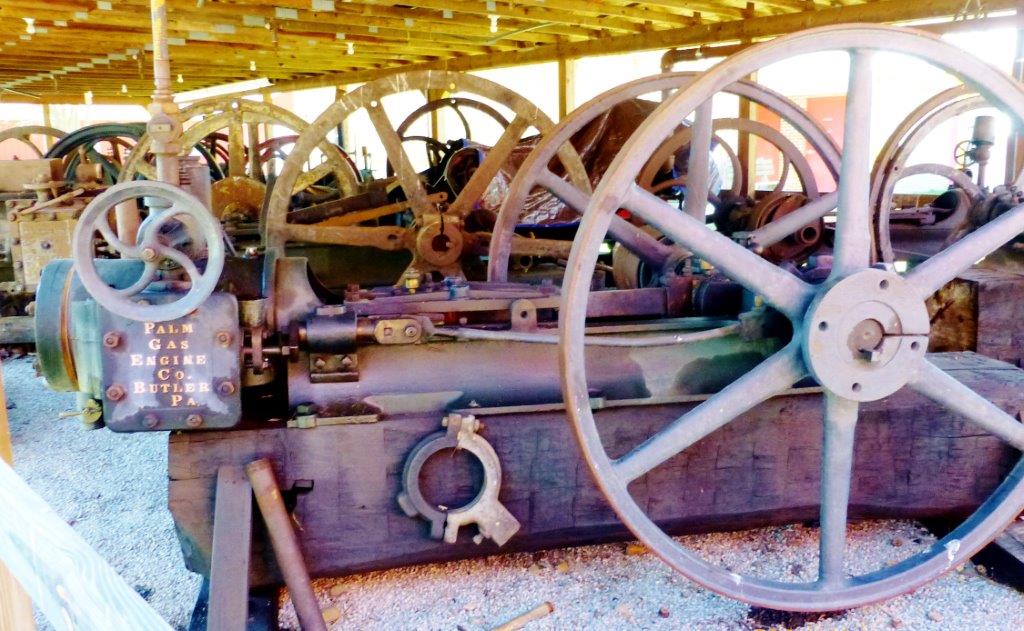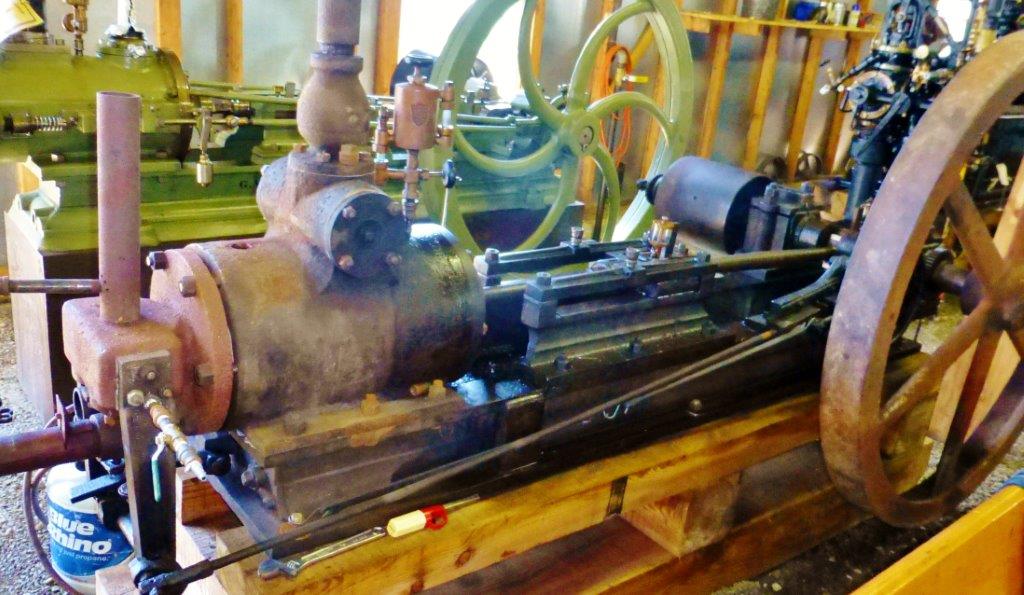|

June 2016
One-of-a-Kind
By Paul Harvey
As this article is
being read,
Coolspring
Power
Museum's 31st annual June Exposition is soon
approaching. The theme for this
year is "One-of-a-Kind Engines."
Of course, all engines are welcome. As the engine collecting world
expands, it's difficult to determine if that rare treasure might be the
only one in existence or not.
Years can go by without a duplicate being found, and then it happens.
Finding another rare or unusual one is the fun of the hobby!
The museum hopes our exhibitors will display the choices that
they feel are rare and interesting.
While preparing the article,
I chose eight museum engines that, to my knowledge, are the only ones in
existence. I would appreciate
hearing from anyone who has another one of these or, better yet, see it
displayed here.
Photo 1,
The
Connelly - This most unusual engine was built by John Storer
Connelly in
New Castle,
Pennsylvania. It is
displayed and can be seen in operation in Founders Engine House.
Manufactured circa 1885, it was originally a duplex engine with a
second cylinder to further expand the exploded charge.
Apparently converted to a four-cycle engine, it was found in a
small oil field machine shop which it powered.
That was in the early 1970s.
It now operates as a four-cycle and is one of the oldest
American engines in the museum.
Photo 2,
The
Lima - This unusual 25 hp engine is displayed and operated in the Founders
Engine House. It features a cross head, vertical governor, and hit
and miss operation. Built by the
Lima Gas Engine Company of
Lima,
Ohio, it
is serial number 547. It
incorporates some details shown in the John Swan patent, which was its
predecessor. This engine pumped a
rod line oil lease near Parker,
Pennsylvania. and was discovered in 1969.
It was my largest engine at that time and it was hauled on the
venerable 1946 Reo.
Photo 3,
The
Jager - This engine was built by the Jager Engine Company
of
Taunton,
Massachusetts. It is serial number 2313.
Being an integral engine and air compressor, it has two power
cylinders and two compressor cylinders.
Jager also built marine engines, and one wonders if this unit
might have supplied compressed air on a large vessel.
It is awaiting restoration and resides in the Machine Works
Building at this time. I located
it in
Maine many years ago, but it became elusive and went
through many owners before arriving here.
Photo 4,
The
Climax - This magnificent 40 hp engine was built by the
Erie Gas Engine Company of
Erie,
Pennsylvania. Serial
number 139. Located in the John P. Wilcox Power
House, it runs very well. Note
the disc crankshaft, high mounted cylinder, and original paint.
It is an early design of Charles Jacobson, who continued to
design the Struthers-Wells engines, and then his own line of engines.
Following a rumor, we discovered it in the basement of an old
mill in
St. Marys,
Pennsylvania in the mid 1970s. Many years went
by before we could remove it by making a hole in the
floor.
Photo 5,
The
Turner Fricke - This massive 150 hp engine operates in the John
P. Wilcox Power
House. Acquired in the early
1970s, it and two identical units generated electricity for the Roystone
Station of the Pennsylvania Gas Company.
The red tile power plant was very close to the big station that
housed our Snow. Designed by
Harry C. Fricke and George E. Turner whose office was in
Pittsburgh, it actually was manufactured in their works in
Sharon,
Pennsylvania. It is implied that this was to
escape from the influence of the Westinghouse engines built in
Pittsburgh. It is
serial number 441 and has its generator beside it
Photo 6,
The
Palm - This unusual engine is designed to run on either
gas or steam. It is located in
the Kougher Half Breed Pavilion and operates on compressed air, at this
time. George Palm, of
Butler,
Pennsylvania, patented several of these convertible engines.
When on gas, it is a four-cycle engine.
Found near East
Brady,
Pennsylvania, in the early 1970s, it was in the tool yard of a
local oil producer.
Photo 7,
The
White Thomas -
A very unique engine, the converted cylinder is
mounted on a Tifft Steam frame.
It is housed in the Lillibridge Station and is not operational yet.
It was built in
Franklin,
Pennsylvania. The cylinder is a two-cycle,
uniflow design with a hit and miss pendulum governor.
Originally found abandoned near
Rouseville,
Pennsylvania, it traversed to
California
before returning here.
Photo 8,
The
Pugh and Tinsman -
A lucky lead took me to a farm near Bruin,
Pennsylvania, to find this engine in pieces.
It originally pumped an oil well and the farmer who owned the engine
decided to scrap it. He called it a Pugh and
Tinsman, made in Bruin, which is the only identification that I have.
Restored and operating in the Lillibridge Station, it is a four-cycle using the original steam cylinder
It arrived here in the mid 1970s.
This has been a brief
tour of eight of the museum's rarest engines. Please bring your
own and join the fun at the museum's Exposition on June 16, 17, and 18,
2016.
|

